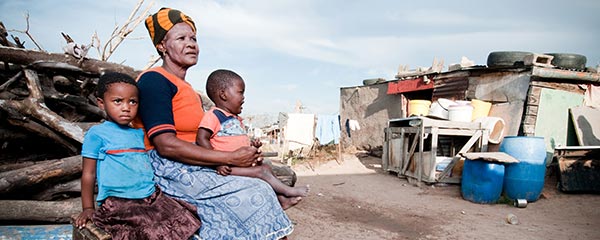Story Highlights
- Conditions in Latin America, Southeastern Europe worst for COVID-19 recovery
- Trust in authorities plays a big role in COVID-19 response efforts
WASHINGTON, D.C. -- Latin America and Eastern/Southeastern Europe are most likely to struggle with long-term efforts to deal with COVID-19 outbreaks and setbacks, according to a new measure that combines Gallup World Poll and Wellcome Global Monitor results from 2018 and 2019 with country-level demographic data.
The new measure, detailed in the COVID-19 Recovery Risks report, addresses three components important to a country's efforts to mitigate the coronavirus in coming months: 1) societal factors, including average age and income inequality; 2) health-related conditions, including per-capita spending on healthcare and residents' satisfaction with their access to quality care; and 3) trust in authorities responsible for managing the crisis, including medical professionals and national governments.
COVID-19 Recovery Risk Scores in 137 Countries and Areas
Scores on the measure are based on a 0-to-100 scale, with higher scores representing higher risk for complications in managing the virus' spread and treating those who contract it. Worldwide, scores range from a low of 26 in Norway to a high of 74 in Ukraine. The global median score across all 137 countries and areas is 53.
Countries where scores suggest recovery conditions are challenging are located in all regions of the world, but cluster in three regions specifically. Among 27 countries whose scores fall into the top 20% on the measure, all but three are in Latin America, Eastern/Southeastern Europe or sub-Saharan Africa.

Heat map. Scores on Gallup's COVID-19 Recovery Risk measure range from a low of 26 in Norway to a high of 74 in Ukraine.
Latin America
Many of Latin America's largest populations -- including Venezuela, Brazil, Peru and Colombia -- score highly based on a combination of factors:
-
They are highly urban. The World Bank estimates that 81% of Latin America residents live in cities, versus far lower percentages in other developing regions such as South Asia (34%) or sub-Saharan Africa (41%). In poverty-stricken slums such as the favelas in Brazil, people live in crowded quarters with poor sanitation and little access to healthcare services -- creating potential hotbeds for virus transmission.
-
Most have weak healthcare capacity. Latin American countries spend considerably less on healthcare than other urbanized regions; the World Bank estimates that the region's per-capita healthcare expenditure in 2017 was just $685, versus $3,261 for EU countries and $9,691 for North America.
-
They have high levels of income inequality. The prevalence of low-income slums alongside more affluent neighborhoods in many Latin American cities highlights the effects of extreme inequality on the consequences of the pandemic. Not only do the region's low-income residents have less access to healthcare, they are more likely to live in communities where social distancing is more difficult and to work in manual labor or service-sector jobs that cannot be done remotely.
-
Residents place little trust in authorities. Distrust of officials such as politicians and healthcare professionals can affect how likely people are to change their behavior in response to official guidelines. People in many Latin American countries lack trust in authorities. In Brazil, which currently has the second-largest COVID-19 death toll in the world, one in four adults (25%) surveyed for the Wellcome Global Monitor in 2018 said they trust the country's doctors and nurses "a lot," and 3% said the same about the country's national government.

Bar chart. Among 27 countries whose scores fall into the top 20% on the measure, all but three are in Latin America, Eastern/Southeastern Europe or sub-Saharan Africa. Many of Latin America's largest populations -- including Venezuela, Brazil, Peru and Colombia -- score highly based on a combination of factors.
Currently in Latin America, Brazil, Mexico, Chile and Peru are all fighting major COVID-19 outbreaks. Daily reported deaths remain high in the region; Peru, Brazil, Chile, Bolivia, Ecuador and Mexico are all among the 10 countries worldwide with the highest COVID-related death rates per capita. Moreover, some studies have found that the actual number of infections in some countries -- including Brazil -- may be much higher than official figures because of low levels of testing.
Eastern/Southeastern Europe
Most countries in Eastern and Southeastern Europe, stretching from the Baltic states in the North to the Balkans in the South, are at risk for COVID-19 mitigation setbacks because of a number of factors:
-
They have large elderly populations. As in Western Europe and developed East Asia, most countries in Eastern and Southeastern Europe have large elderly segments that are particularly vulnerable to serious complications from the virus. Bulgaria, Latvia, Greece, Serbia and Croatia are among the 11 countries worldwide where at least 20% of the population is 65 or older.
-
Access to healthcare is often limited. Eastern/Southeastern European countries invest less in healthcare services and accessibility than others with aging populations, as reflected in lower per-capita healthcare expenditures and lower levels of satisfaction with health services. Gallup's World Poll finds that across 21 Eastern/Southeastern European countries surveyed in 2019, a median of 51% of residents were satisfied with access to quality healthcare in their area, vs. 79% among Western European countries.
-
Most are low-trust societies. Like many in Latin America, Eastern/Southeastern European countries tend to be low-trust societies where people are suspicious of authorities, including healthcare experts and government officials. In recent years, this has translated into high levels of vaccine skepticism in much of the region.

Bar chart. Most countries in Eastern and Southeastern Europe, stretching from the Baltic states in the North to the Balkans in the South, are at risk for COVID-19 mitigation setbacks.
In the early months of the pandemic, countries in Europe's Eastern and Southeastern regions appeared to manage it better than their neighbors to the west, in many cases initiating lockdown procedures more quickly and enforcing them more stringently. However, as cases have fallen in Western Europe, they have risen in the East -- especially the southeastern Balkan countries, which are now COVID-19 hot spots.
Implications
There are inherent limitations to consider with regard to this analysis. Per-capita expenditure is an important but imperfect gauge of how developed a country's healthcare system is; actual health outcomes also depend on how efficiently and equitably that money is spent. For example, though the U.S. spends more per capita on healthcare than any other country in the world, health-related outcomes are consistently poorer in the U.S. than in countries with lower healthcare expenditures, partly attributable to structural inefficiencies and discrepancies in access to quality care.
Such caveats notwithstanding, this measure offers a unique perspective on "starting point" conditions that may have influenced -- and continue to influence -- a country's efforts to manage the pandemic. Notably, as low-trust countries in Latin America, Eastern Europe and elsewhere have demonstrated, confidence in authorities to provide clear, accurate information and make sound decisions that reflect the public interest is essential to the high level of cooperation between governments and citizens required to mitigate the virus.
For complete methodology and specific survey dates, please review Gallup's Country Data Set details.
Learn more about how the Gallup World Poll works.




